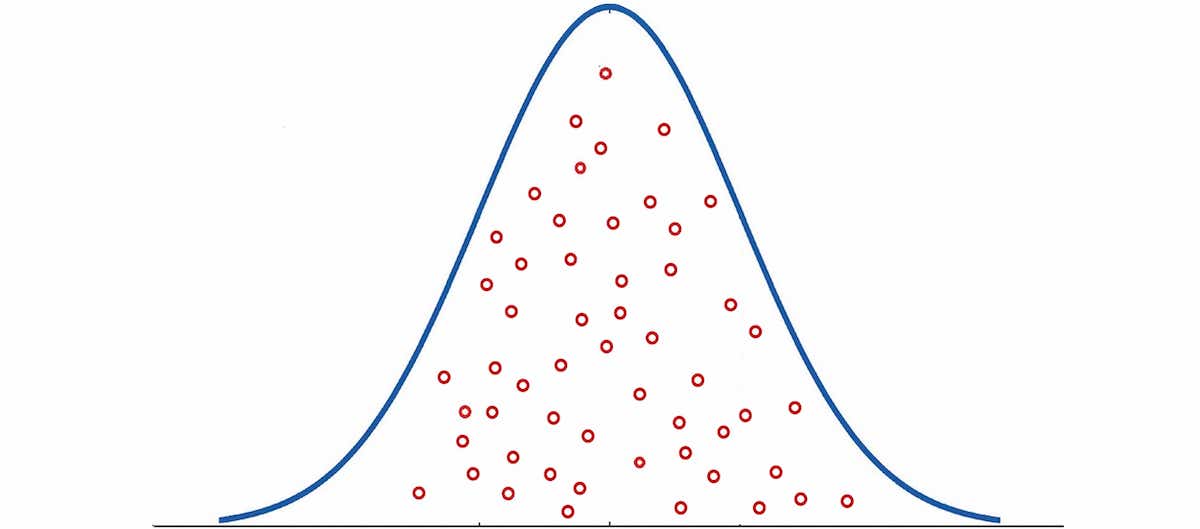What Is the Purpose of Sampling in Research?

Quick Navigation:
By Aaron Moss, PhD, Cheskie Rosenzweig, PhD, & Leib Litman, PhD
Online Researcher’s Sampling Guide, Part 1:
What Is the Purpose of Sampling in Research?
Every ten years, the U.S. government conducts a census—a count of every person living in the country—as required by the constitution. It’s a massive undertaking.
The Census Bureau sends a letter or a worker to every U.S. household and tries to gather data that will allow each person to be counted. After the data are gathered, they have to be processed, tabulated and reported. The entire operation takes years of planning and billions of dollars, which begs the question: Is there a better way?
As it turns out, there is.
Instead of contacting every person in the population, researchers can answer most questions by sampling people. In fact, sampling is what the Census Bureau does in order to gather detailed information about the population such as the average household income, the level of education people have, and the kind of work people do for a living. But what, exactly, is sampling, and how does it work?
At its core, a research sample is like any other sample: It’s a small piece or part of something that represents a larger whole.
So, just like the sample of glazed salmon you eat at Costco or the double chocolate brownie ice cream you taste at the ice cream shop, behavioral scientists often gather data from a small group (a sample) as a way to understand a larger whole (a population). Even when the population being studied is as large as the U.S.—about 330 million people—researchers often need to sample just a few thousand people in order to understand everyone.
Now, you may be asking yourself how that works. How can researchers accurately understand hundreds of millions of people by gathering data from just a few thousand of them? Your answer comes from Valery Ivanovich Glivenko and Francesco Paolo Cantelli.
Glivenko and Cantelli were mathematicians who studied probability. At some point during the early 1900s, they discovered that several observations randomly drawn from a population will naturally take on the shape of the population distribution. What this means in plain English is that, as long as researchers randomly sample from a population and obtain a sufficiently sized sample, then the sample will contain characteristics that roughly mirror those of the population.

“Ok. That’s great,” you say. But what does it mean to randomly sample people, and how does a researcher do that?
Defining Random vs. Non-Random Sampling
Random sampling occurs when a researcher ensures every member of the population being studied has an equal chance of being selected to participate in the study. Importantly, ‘the population being studied’ is not necessarily all the inhabitants of a country or a region. Instead, a population can refer to people who share a common quality or characteristic. So, everyone who has purchased a Ford in the last five years can be a population and so can registered voters within a state or college students at a city university. A population is the group that researchers want to understand.
In order to understand a population using random sampling, researchers begin by identifying a sampling frame—a list of all the people in the population the researchers want to study. For example, a database of all landline and cell phone numbers in the U.S. is a sampling frame. Once the researcher has a sampling frame, he or she can randomly select people from the list to participate in the study.
However, as you might imagine, it is not always practical or even possible to gather a sampling frame. There is not, for example, a master list of all the people who use the internet, purchase coffee at Dunkin’, have grieved the death of a parent in the last year, or consider themselves fans of the New York Yankees. Nevertheless, there are very good reasons why researchers may want to study people in each of these groups.
When it isn’t possible or practical to gather a random sample, researchers often gather a non-random sample. A non-random sample is one in which every member of the population being studied does not have an equal chance of being selected into the study.
Because non-random samples do not select participants based on probability, it is often difficult to know how well the sample represents the population of interest. Despite this limitation, a wide range of behavioral science studies conducted within academia, industry and government rely on non-random samples. When researchers use non-random samples, it is common to control for any known sources of sampling bias during data collection. By controlling for possible sources of bias, researchers can maximize the usefulness and generalizability of their data.
Why Is Sampling Important for Researchers?
Everyone who has ever worked on a research project knows that resources are limited; time, money and people never come in an unlimited supply. For that reason, most research projects aim to gather data from a sample of people, rather than from the entire population (the census being one of the few exceptions). This is because sampling allows researchers to:
Save Time
Contacting everyone in a population takes time. And, invariably, some people will not respond to the first effort at contacting them, meaning researchers have to invest more time for follow-up. Random sampling is much faster than surveying everyone in a population, and obtaining a non-random sample is almost always faster than random sampling. Thus, sampling saves researchers lots of time.
Save Money
The number of people a researcher contacts is directly related to the cost of a study. Sampling saves money by allowing researchers to gather the same answers from a sample that they would receive from the population.
Non-random sampling is significantly cheaper than random sampling, because it lowers the cost associated with finding people and collecting data from them. Because all research is conducted on a budget, saving money is important.
Collect Richer Data
Sometimes, the goal of research is to collect a little bit of data from a lot of people (e.g., an opinion poll). At other times, the goal is to collect a lot of information from just a few people (e.g., a user study or ethnographic interview). Either way, sampling allows researchers to ask participants more questions and to gather richer data than does contacting everyone in a population.
The Importance of Knowing Where to Sample
Efficient sampling has a number of benefits for researchers. But just as important as knowing how to sample is knowing where to sample. Some research participants are better suited for the purposes of a project than others. Finding participants that are fit for the purpose of a project is crucial, because it allows researchers to gather high-quality data.
For example, consider an online research project. A team of researchers who decides to conduct a study online has several different sources of participants to choose from. Some sources provide a random sample, and many more provide a non-random sample. When selecting a non-random sample, researchers have several options to consider. Some studies are especially well-suited to an online panel that offers access to millions of different participants worldwide. Other studies, meanwhile, are better suited to a crowdsourced site that generally has fewer participants overall but more flexibility for fostering participant engagement.
To make these options more tangible, let’s look at examples of when researchers might use different kinds of online samples.
Different Use Cases of Online Sampling
Academic Research
Academic researchers gather all kinds of samples online. Some projects require random samples based on probability sampling methods. Most other projects rely on non-random samples. In these non-random samples, researchers may sample a general audience from crowdsourcing websites or selectively target members of specific groups using online panels. The variety of research projects conducted within academia lends itself to many different types of online samples.
Market Research
Market researchers often want to understand the thoughts, feelings and purchasing decisions of customers or potential customers. For that reason, most online market research is conducted in online panels that provide access to tens of millions of people and allow for complex demographic targeting. For some projects, crowdsourcing sites, such as Amazon Mechanical Turk, allow researchers to get more participant engagement than is typically available in online panels, because they allow researchers to select participants based on experience and to award bonuses.
Public Polling
Public polling is most accurate when it is conducted on a random sample of the population. Hence, lots of public polling is conducted with nationally representative samples. There are, however, an increasing number of opinion polls conducted with non-random samples. When researchers poll people using non-random methods, it is common to adjust for known sources of bias after the data are gathered.
User Testing
User testing requires people to engage with a website or product. For this reason, user testing is best done on platforms that allow researchers to get participants to engage deeply with their study. Crowdsourcing platforms are ideal for user testing studies, because researchers can often control participant compensation and reward people who are willing to make the effort in a longer study.
Online research is big business. There are hundreds of companies that provide researchers with access to online participants, but only a few facilitate research across different types of online panels or direct you to the right panel for your project. At CloudResearch, we are behavioral and computer science experts with the knowledge to connect you with the right participants for your study and provide expert advice to ensure your project’s successful conclusion. Learn more by contacting us today.




